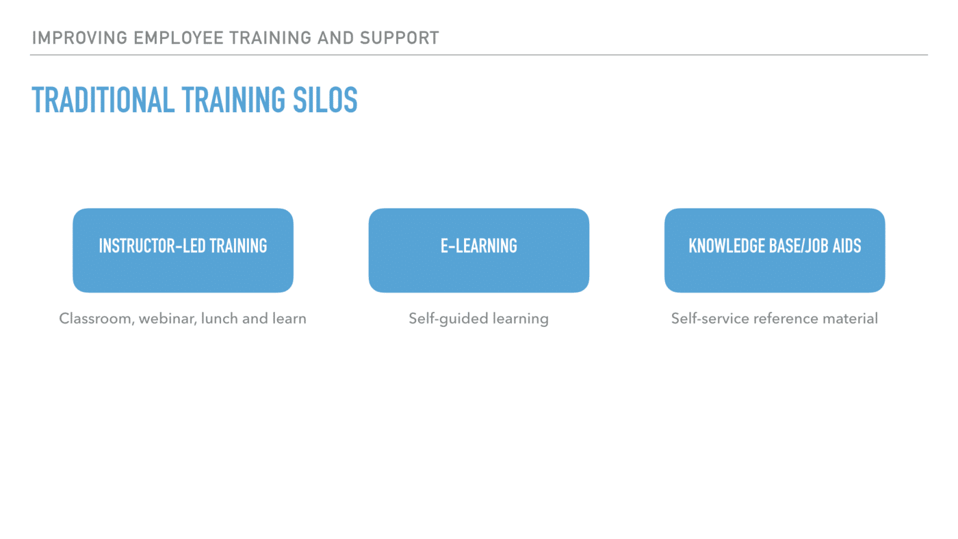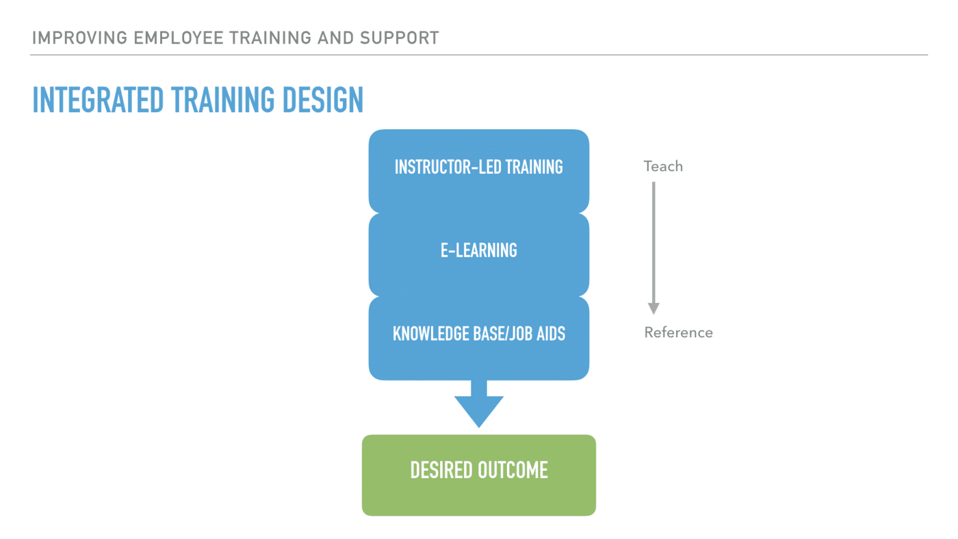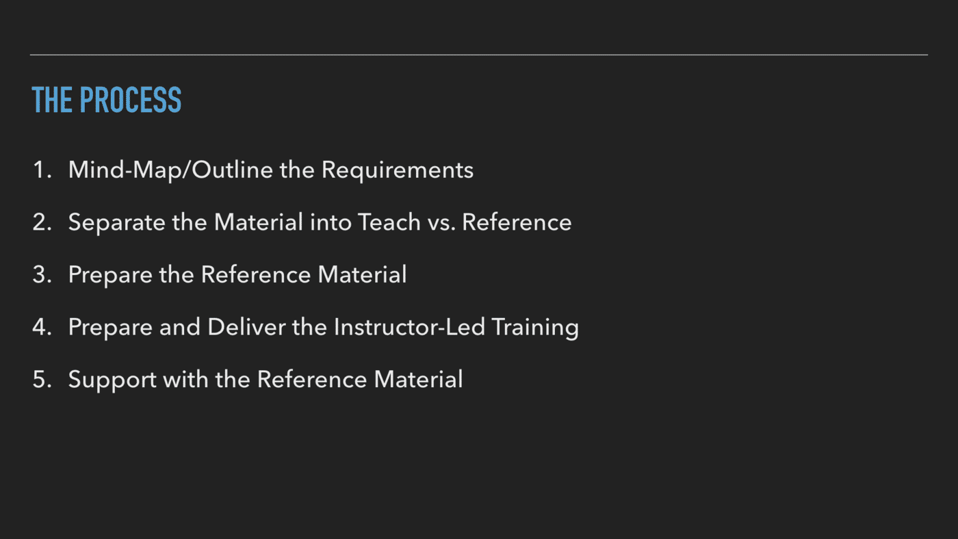The video below gives a brief overview of how you can integrate instructor-led training, e-learing and knowledge base content to improve employee learning and performance. The video is about 4 minutes long.
Here is the transcript:
We spend a lot of time talking to customers about the training challenges they are confronting. We speak with companies that are training workforces that range in size from 10-20 all the way up to 1000 or more. The size of the company may be different but the challenges are very similar. Processes and procedures and tools are constantly changing and workforces are increasingly distributed meaning it is hard to get everyone together for a "training session."
Traditional training methods can't address the needs of the new reality.
In many organizations training is divided up into silos. I’m not talking about departments. I’m talking about training formats.

First, we have instructor-led training. This is how most organizations handle training right now. It includes class room learning, webinars and lunch and learns - anywhere where an instructor is teaching content in real time.
Next we have e-learning. Some organizations are embracing this and some are just really recording instructor-led training and then calling it e-learning. For our purposes, we are going to define e-learning as self-guided learning.
Finally we have knowledge bases and job aids. These are used to provide self-service reference material.
In many organizations these are all treated as separate entities. They are all training tools but they aren’t tied together into a cohesive, integrated approach.
If we can bring these together and create an integrated plan we can use the strengths of each format and create a better training experience. We will focus on teaching what needs to be taught and providing reference or self-service material for what only needs to be referenced.

By integrating our training approach we can then create better outcomes.
The better outcomes aren’t just seen in better training results. There are other benefits as well. Our training becomes:
- Less time consuming
- More engaging
- More adaptable
- Less stressful
All these things combined create better outcomes for the employees, the trainers and the organization as a whole.
The Process
Let me give you an overview of the process we help customers go through. This is something you can do on your own or you can have our team help you with. Later videos will take each step and go into more detail. Right now I am just going to give you high-level overview.

First, you want to Mind-Map or outline the requirements. You need to know the outcome you want to achieve in the organization, as well as what knowledge and skills will be required.
Next you want to separate all that material out into two groups: What needs to be taught and learned vs. what can be referenced later on.
Once you have created those two groups you want to prepare the reference material. The reference material will be used to support the instructor-led training.
You then prepare and deliver the instructor-led training. This training focuses on two things:
- Teaching only the concepts that need to be taught
- Teaching the employees how to access and use the reference material you have created.
The instructor-led training ends up being much shorter than normal because only key conpcets are being taught.
Finally, after the instructor-led training you continue to support your employees through reference material. You identify gaps in their knowledge and fill those gaps in with help articles, videos and checklists.
Your employees become more productive in less time, mistakes decrease and the business becomes more efficient.
That’s it for this post. In future posts, we will dive into each step in depth.





